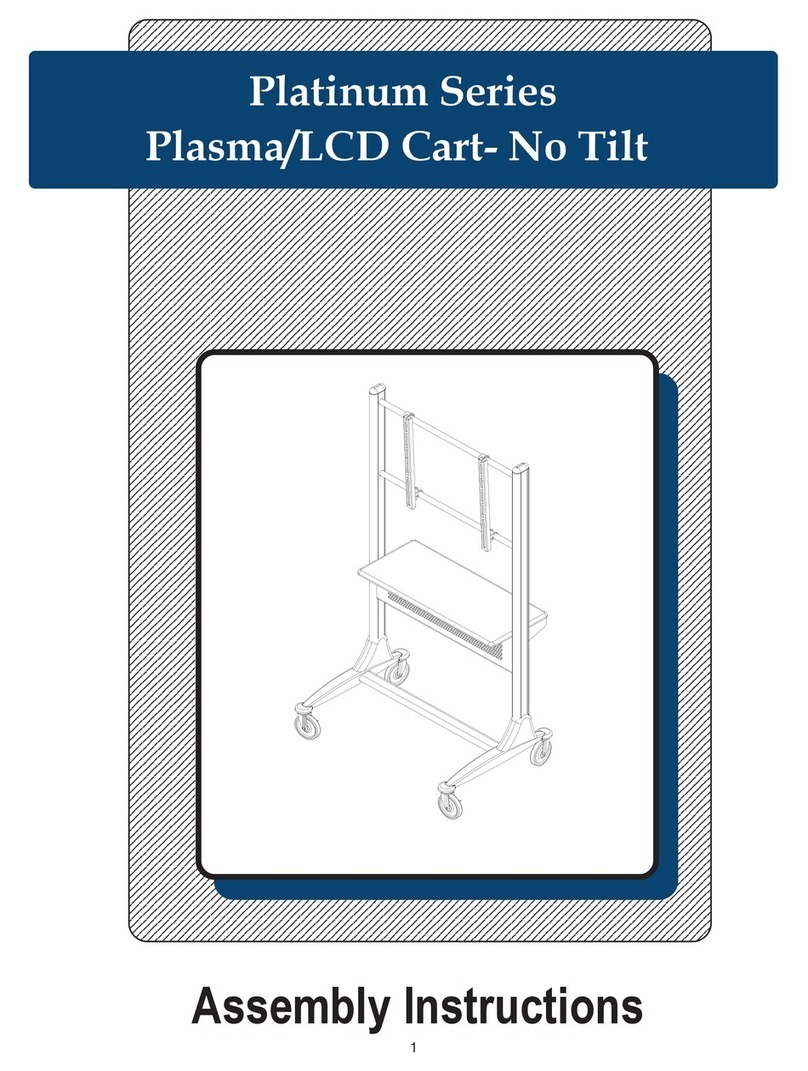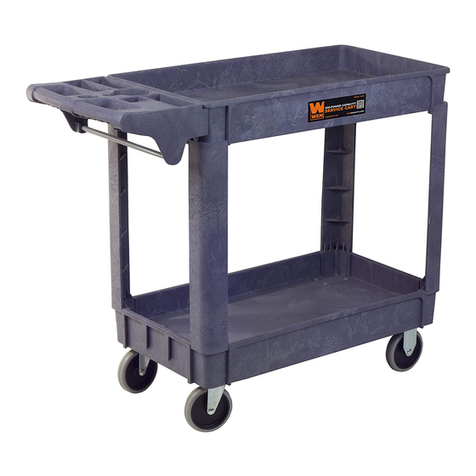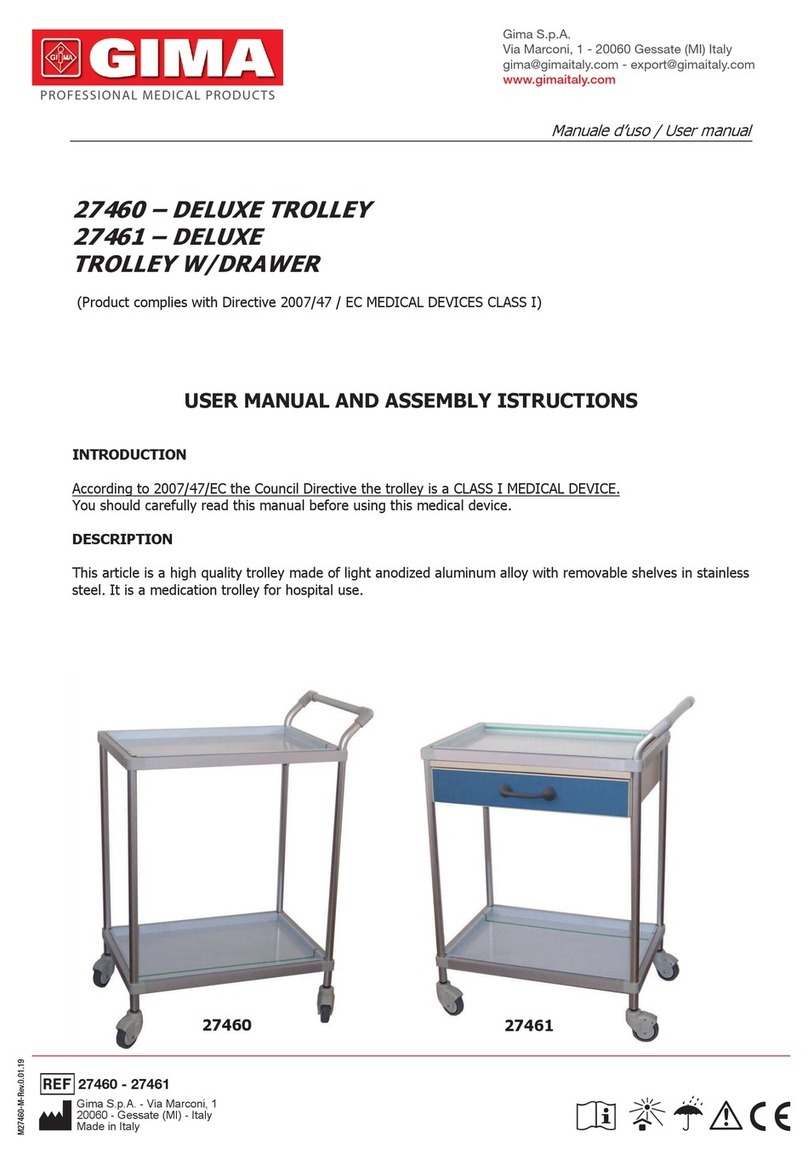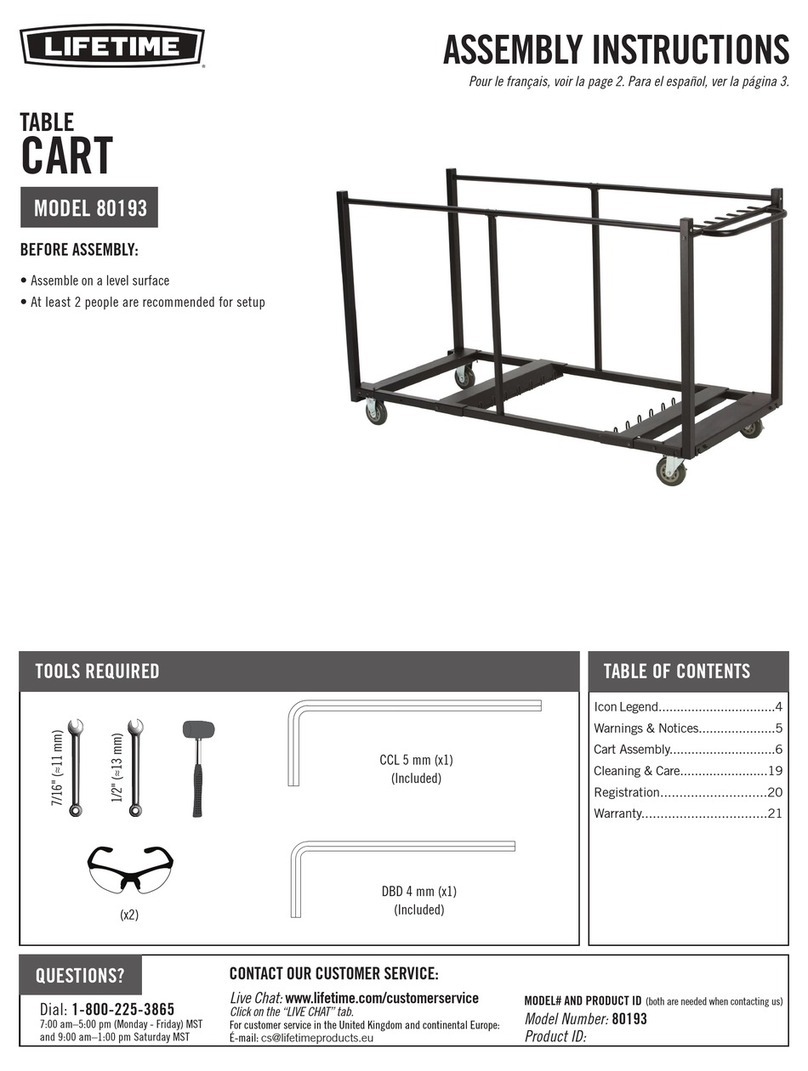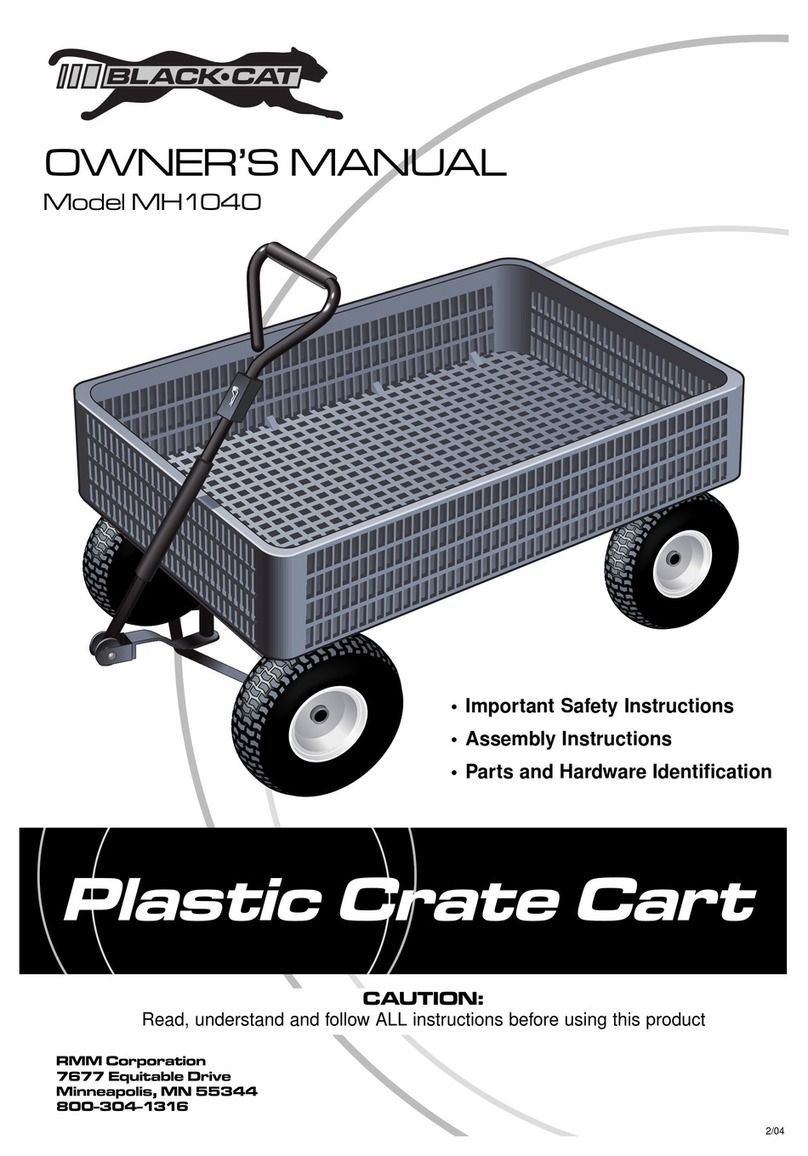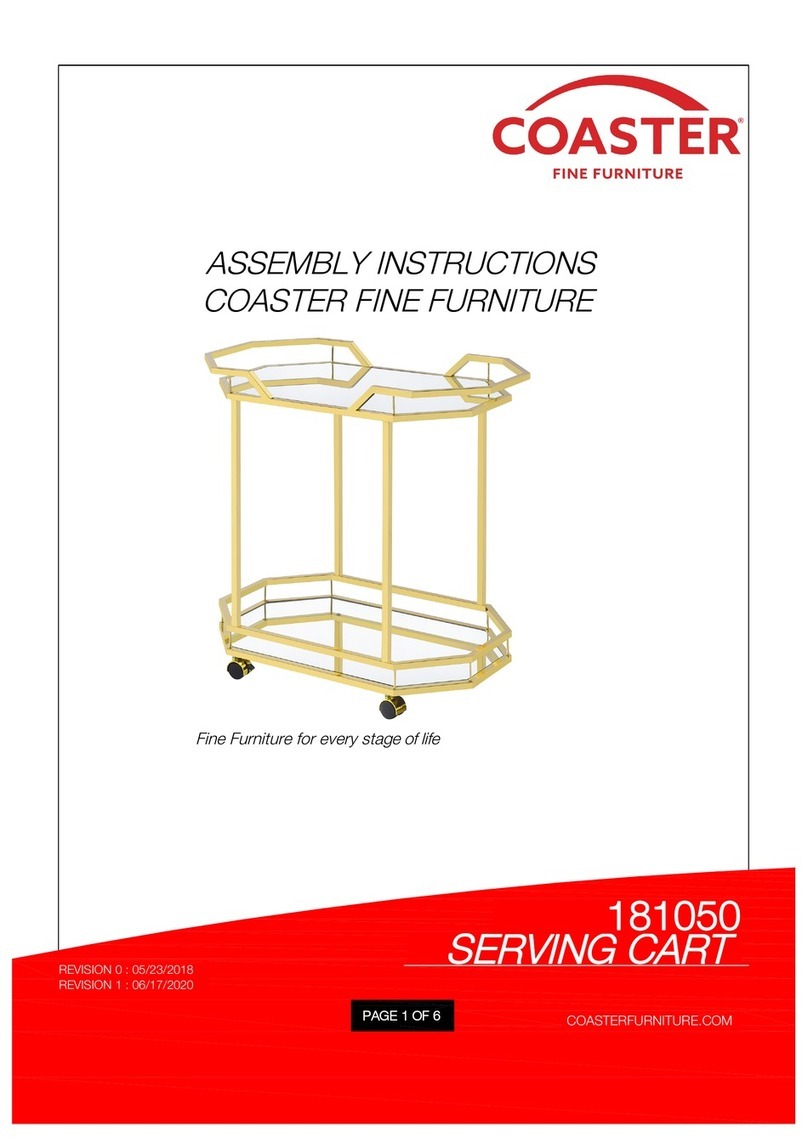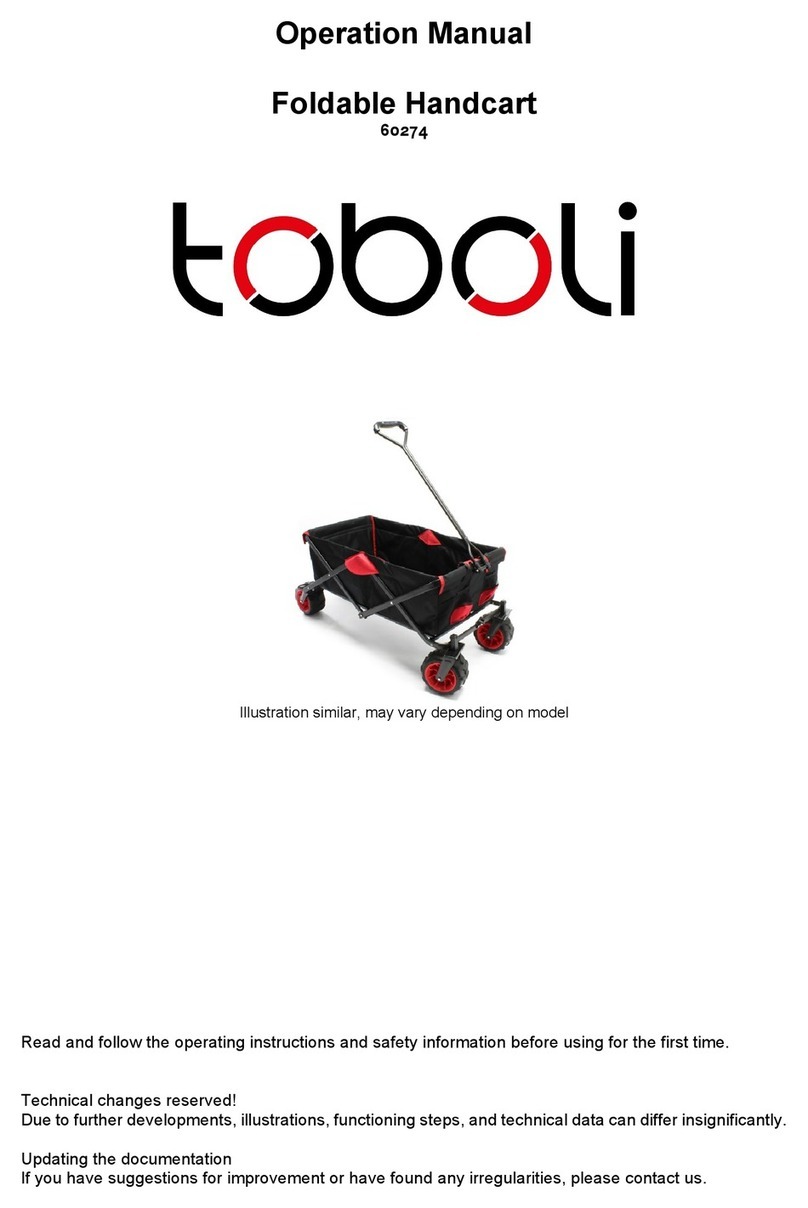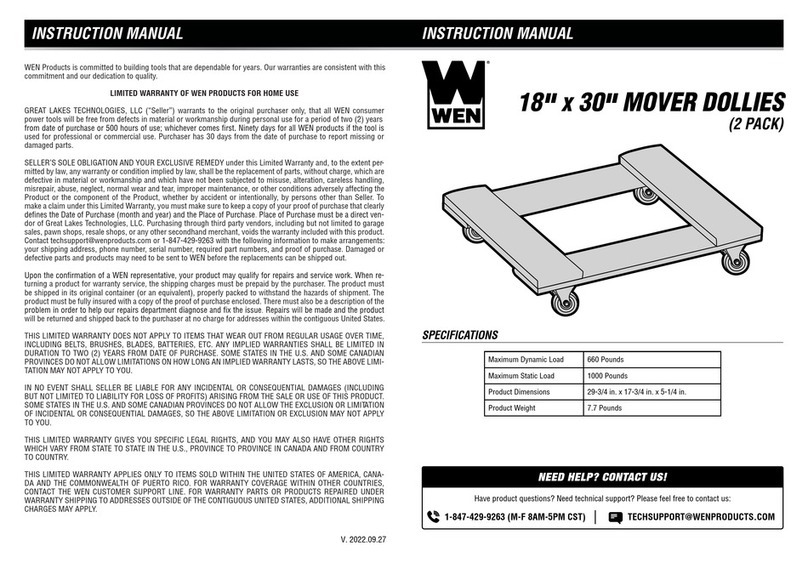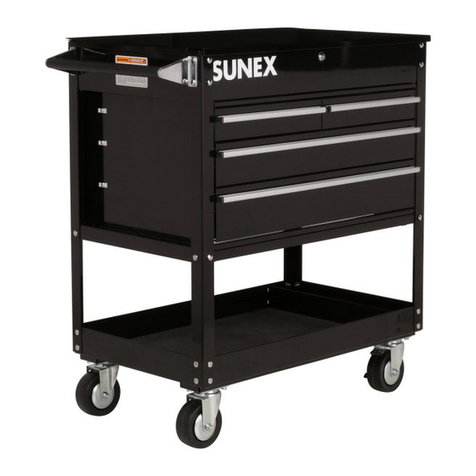nor-tec T-448AC Installation instructions

WARNING
This manual is for the exclusive use of
dealers accredited by Motrec International
Inc. and should not be considered an
ocial document constituting any kind of
guarantee for the end user. All information
and data are subject to change without
notice. All photos contained in this
document are for illustrative purposes only
and may include non-applicable options.
PARTS:
It is recommended that part numbers be
confirmed with Motrec International Inc.
before ordering by providing the serial
number of the vehicle requiring the part.
In some cases, the part installed on the
vehicle may dier from the manual
depending on the options chosen.
AVERTISSEMENT
Ce manuel est destiné à l’usage exclusif
des concessionnaires accrédités par
Motrec International Inc. et n’est pas
considéré comme un document ociel
pouvant servir de garantie pour l’utilisateur
final. Les informations et données sont
assujetties à des changements sans
préavis. De plus, les photos présentées
sont à titre indicatif seulement et pourraient
inclure des options non applicables.
PIÈCES:
Il est recommandé de valider les numéros
de pièces avec Motrec International Inc.
avant de commander, en fournissant le
numéro de série du véhicule pour lequel
la pièce est requise. Dans certains cas, il
est possible que la pièce installée sur le
véhicule dière du manuel en fonction
des options choisies.
Publication date:
July 1, 2015
Edition for vehicles with
a serial number higher than:
1135410
For additional information,
please contact our customer service:
MOTREC INTERNATIONAL INC.
200 Des PME Street
Sherbrooke, Quebec J1C 0R2
Canada
1-866-846-3558
Date de publication:
1er juillet 2015
Édition destinée aux véhicules ayant
un numéro de série supérieur à:
1135410
Pour toutes informations additionnelles,
contactez notre service à la clientèle:
MOTREC INTERNATIONAL INC.
200, rue des PME
Sherbrooke, Québec J1C 0R2
Canada
1-866-846-3558
www.motrec.com
T-448AC

T-448AC
OPERATOR AND MAINTENANCE MANUAL
SPARE PARTS LISTS INCLUDED
SERIAL NUMBER : 1135410 &UP
Printed in Canada

09/02/2015
One Year Limited Warranty
Effective April 25, 2005, Motrec International Inc. (MOTREC) hereby warrants to the Original Retail Purchaser (Owner) that
any of its vehicles shall be free from any defect in materials for a period of 90 DAYS while in the possession of such Original
Retail Purchaser. This warranty IS NOT TRANSFERABLE to any subsequent Buyer.
The warranty period is extended to one year or one thousand (1,000) hours, which ever first occurs, on the electric motor,
differential (parts that bathe in oil) and the electronic speed controller. MOTREC makes no warranty or representation with
respect to the internal combustion engine, tires and batteries, since their respective manufacturers cover such parts.
Accessories (light, gage, horn, etc), electrical contacts (switch, solenoid, contactor, relay), diodes & fuses, belts & pulleys,
filters & spark plugs, lubricants, brake linings & shoes, brake drums & discs, seals, seats, trim and other items subject to
wear are not included in this warranty; nor is any item that in MOTREC sole opinion, shows evidence of neglect, misuse,
abuse, collision or alteration.
This warranty shall not apply to normal maintenance requirements as described in the User Manual, and to damages during
shipment. The latter is the carrier's responsibility. No compensation will be allowed for delays.
To initiate warranty coverage on any MOTREC vehicle, the Dealer must complete and return the “Sales/Installation Report”
to MOTREC within 30 days after delivery to the Original Retail Purchaser; or within 90 days after the delivery date to the
Dealer, which ever occurs first. Failure to follow these procedures will result in considering the warranty coverage effective
as of the shipment date from the factory.
The defective vehicle must be returned, at the Owner's expense, to an authorised MOTREC Dealer within 30 days after
failure. The Owner will not be charged for parts and labour required for warranty repairs, which must be performed by an
authorised MOTREC Dealer only. The vehicle will be returned at the owner’s expense. The Warranty Claim Forms must be
completed and returned with the defective part(s) to MOTREC within 30 days after repair was done. No compensation will be
allowed for damages caused by vehicle downtime.
It is the responsibility of the owner of the vehicle to make sure that the driver is properly trained and instructed in the safety
features and operation of the vehicle, including vehicle stability, as required by OSHA and ANSI-B56. Operators shall read,
understand and follow the safety and operating instructions in MOTREC Manual before driving the vehicle. Operators shall
not be permitted to drive the vehicle unless a complete and adequate training has been provided. Driving a vehicle
constitutes a hazard. The driver is responsible for the control of the vehicle while driving and must always evaluate and care
for all peculiar situations that he or she may meet while driving. The driver assumes the inherent hazards related to this
activity. The vehicle is designed for off-road use only. MOTREC disclaims any liability for incidental or consequential
damages, to include, but not be limited to, personal injury or property damage arising from vehicle misuse, lack of
maintenance or any defect in the vehicle.
It is the responsibility of the Owner of the vehicle to make sure that the service technicians are properly trained as required
by OSHA and ANSI-B56. Service technicians shall read, understand and follow instructions in the MOTREC manual before
servicing the vehicle. Only qualified and authorized personnel shall be permitted to maintain, repair, adjust and inspect the
vehicle.
MOTREC prohibits, and disclaims responsibility for, any vehicle modification altering the weight distribution and stability,
increasing the speed or affecting the safety of the vehicle. Such modifications can cause serious personal injury or property
damage for which MOTREC disclaims any responsibility.
For Owners that are located outside North America, the warranty period starts the date of shipment from the factory, and the
defective parts must be returned at the Owner's expense to MOTREC prior to warranty repair.

Table of contents
- 3 -
TABLE OF CONTENTS
ONE YEAR LIMITED WARRANTY 2
INSTRUCTIONS 4
SAFETY WARNINGS FOR OPERATORS 5
OPERATING INSTRUCTIONS 6
MAINTENANCE 7
SAFETY WARNINGS FOR SERVICE TECHNICIANS 8
DECALS AND LABELS 10
PERIODIC MAINTENANCE CHECKLIST 11
OIL GRADE CHART 12
ACCELERATOR 13
HYDRAULIC & PARKING BRAKES 16
FRONT AXLE AND STEERING 17
BATTERY MAINTENANCE 18
ELECTRICAL TROUBLESHOOTING 20
SPARE PARTS 34
BODY 35
DIFFERENTIAL 22.3:1 36
DIFFERENTIAL 27.7:1 38
BRAKE CONTROLS 40
FRONT AXLE, SUSPENSION, STEERING, DISC BRAKES 41
REAR SUSPENSION AND BRAKE 43
ELECTRICAL DIAGRAM – MAIN CIRCUIT 44
DIAGRAMME ÉLECTRIQUE – CIRCUIT PRINCIPAL 44
MOTREC ILLUSTRATED ACCESSORIES – AC VEHICLES 55

Instructions
- 4 -
INSTRUCTIONS

Instructions
- 5 -
SAFETY WARNINGS FOR OPERATORS
FAILURE TO OBEY THE FOLLOWING SAFETY RULES MAY RESULT IN SEVERE INJURY.
It is the responsibility of the owner of this vehicle to train operators to ensure that they understand the operating
characteristics of this vehicle, including training in vehicle stability, and obey the following safety rules and
guidelines. Owner shall comply with OSHA and ANSI/ITSDF B56.8 & B56.9 Standards for vehicle use, safety rules,
operator training and certification. Do not drive this vehicle unless you are a qualified operator.
Do not drive this vehicle under the influence of drugs or alcohol.
Do not drive this vehicle on public roads and highways. This vehicle is designed to be driven in buildings.
The electrical system of this vehicle will make sparks which can ignite inflammable materials. Never use the vehicle
in hazardous areas where there are inflammable materials, explosive dust or fumes in the air.
Have your vehicle inspected regularly by trained personnel, and cease operation if a malfunction occurs.
Do not open battery compartment to prevent battery explosion, acid splashing, severe damage to eyes or skin.
Do not open motor compartment. Keep clear from moving, rotating(wheels, sheaves, etc) or lifting parts.
Never carry more passengers than number allowed for this vehicle. Wait until all occupants are seated and holding on
before moving. Always keep all body parts inside vehicle. Keep both hands on steering wheel.
Do not exceed the vehicle cargo load capacity and gross trailing weight capacity, rated for flat hard even surface.
Different operating conditions such as loose terrain or ramps reduce vehicle capacity.
Avoid loose, unbalanced or top-heavy loads to keep a good stability and prevent overturn. Do not load cargo that can
fall off the vehicle. Do not carry cargo that is longer, wider or higher than this vehicle.
Always depress slowly the accelerator for smooth acceleration. Avoid stunt driving or horseplay.
Avoid sharp turns, always slow down before turning, to prevent vehicle overturn or trailer jack knife. Vehicle is more
sensitive to overturn and jack knife when traveling on inclines or when carrying a heavy load.
Always drive straight up and down the face of an incline, never across the face, to prevent overturn and trailer jack
knife. Drive slower and start applying brakes sooner on inclines to adjust for longer stopping distance.
Use extra care and drive slowly in reverse, in congested areas or on wet or slippery ground.
Keep to the right under normal conditions. Maintain a safe distance from all objects.
Slow down and sound the horn when approaching a corner or other blind intersections.
Before leaving the vehicle, park on a level ground flat surface, turn off all switches, set the forward/reverse switch to
neutral, set the parking brake, remove the key. Do not park the vehicle on an incline.
Before battery charging, park the vehicle in a well ventilated area set for. Do not operate it when charging. To
interrupt a charging cycle, disconnect the AC plug; disconnecting the DC plug or a battery terminal, or operating the
vehicle, could damage the charger and produce a spark, battery explosion and acid splashing.
Use another driver to steer this vehicle while it is towed. Be sure the driver uses brakes when you slow or stop the
towing vehicle. Do not exceed 5 MPH or carry any passenger while towing this vehicle.

Instructions
- 6 -
OPERATING INSTRUCTIONS
It is the responsibility of the owner of this vehicle to ensure that the operator understands the operating
characteristics of this vehicle, and obeys the safety instructions in this manual and ANSI/ITSDF B56.8 & 9
Standards. Do not drive this vehicle unless you are a certified operator as required by OSHA.
BEFORE TURNING ON KEYSWITCH
Set to neutral, set parking brake, check for visible damage, check brake pedal.
AFTER TURNING ON KEYSWITCH
Check safety devices: seat switch, reverse alarm, motion beeper, strobe light, and all other safety devices.
BATTERIES
Never open the battery compartment unless you have received proper training for battery maintenance.
Batteries emit explosive hydrogen gas that can be ignited by a spark or loose terminal. Battery acid causes severe damage to
eyes or skin. Flush the contaminated area immediately with water. Park the vehicle in a well ventilated area for battery
charging. Most battery chargers come with an electronic control that starts when the charger is plugged and stop when the
battery is fully charged. To interrupt the charging cycle, disconnect the AC-plug, do not disconnect the DC plug.
BATTERY DISCHARGE INDICATOR
The green light moves from right to left as batteries are being discharged. When the green light is at the last position on the
left the batteries must be recharged. A flashing light warns the operator that further discharge will damage batteries. See
HOBBS indicator instructions.
EMERGENCY SAFETY DEVICE
The emergency push button or battery disconnect handle, when present, should only be used in case of emergency. Use the
key switch for normal ON/OFF control.
KEYSWITCH
Depress brake pedal and turn the key switch clockwise for on position. Always turn off all switches, set the F/R selector to
neutral, set the parking brake, remove the key before leaving the vehicle.
HORN
Depress the horn button on the steering column or handle bar.
F/R SWITCH
Three positions with neutral at center. Depress the front part of the rocker switch for forward direction. Depress the rear part
of the rocker switch for reverse direction. Always set switch to neutral, turn off all switches, set the parking brake, remove
the key before leaving the vehicle.
ACCELERATOR PEDAL
It is designed for right foot operation only, and controls the speed of the vehicle. Apply slowly.
FOOT BRAKE PEDAL
It is designed for right foot operation only. The brake force is proportional to the pressure on the pedal.
PARKING BRAKE
Pull handbrake lever to apply. Never park the vehicle on an incline. Always turn off all switches, set the F/R selector to
neutral, set the parking brake, remove the key before leaving the vehicle.

Maintenance
- 7 -
MAINTENANCE

Maintenance
- 8 -
SAFETY WARNINGS FOR SERVICE TECHNICIANS
FAILURE TO OBEY THE FOLLOWING SAFETY RULES MAIN RESULT IN SEVERE INJURY.
Owner shall comply with OSHA and ANSI/ITSDF B56.8 & B56.9 Standards for vehicle maintenance.
Only qualified and authorized personnel shall be permitted to maintain, repair, adjust and inspect
carriers, vehicles, tractors, and batteries.
Before any maintenance work, park the vehicle on flat level surface, turn off all switches, remove key,
lift wheels off the ground and secure with jack stands of adequate capacity. Don’t connect charger.
Keep clear from moving parts such as tires, sheaves and motor.
Follow the maintenance instructions applicable to the type of repair, maintenance, or service.
Always wear a face shield and gloves when working around batteries.
Before opening the battery compartment, disconnect the charger, turn off all switches and remove the
key. Batteries emit highly explosive gases which greatly increase when charging; do not disturb
connections or produce sparks around batteries to avoid a battery explosion and acid splashing. Battery
acid causes severe damage to eyes or skin. Flush contaminated area immediately with water.
Use insulated tools to avoid sparks that can cause battery explosion and acid splashing.
Use two counteracting tools, double-wrench technique, when disconnecting or tightening terminals on
the battery and the speed controller to avoid cracking the terminal or battery post welds.
Before cleaning or replacing a battery, charger, speed controller, contactor, relay, diode, or any other
component in the power circuit, always disconnect the charger, turn off all switches, remove the key,
wear a face shield and gloves, identify battery polarity and disconnect battery leads, discharge the
capacitor in the controller with a 10 ohms, 25 W resistor for a few seconds across B+ and B-.
After cleaning, the power must not be reapplied until terminal areas are thoroughly dry.
On EE-Rated vehicles make sure that the control box is sealed, the static strap makes good contact with
the ground, the motor is sealed by bands, the cable protectors are properly installed.
Keep cables and wires clear from mechanical and rubbing action. Make sure that cable insulation is
free from cutting or visible damage. Make sure that EE-Rated cable protectors are properly installed.
Before replacing a fuse or circuit breaker, identify the cause of failure and repair.
Programmable controllers must be programmed using the parameter settings in this service manual,
before connecting the motor, to avoid sudden vehicle movement and accident.

Maintenance
- 9 -
Do not try to increase motor speed by changing parameter settings in the speed controller; it can cause
accident and severe damage to the motor.
SEPEX speed controls are protected by a diode in the power circuit to filter inductive loads in the event
of a sudden power interrupt. Some speed controllers require a diode to filter inductive loads on the KSI
input. Removing the diodes will cause the speed control failure.
Before resuming maintenance operations, inspect safety warnings stickers and replace any if damage is
found and part of the text can’t be read.
Check decals and labels, see “DECAL AND LABELS” page.

Maintenance
- 10 -
General security warning label:
# 5100000001
When a disconnect handle is installed, this label
is required (located in front of handle):
# 4800012J
When an emergency push button is
installed, this label is required (located
under push button): # 3109800006
DECALS AND LABELS
! CAUTION !
The images included in this section depict the decals/markings installed on the vehicle. It is of
the utmost importance that theses decals/markings remain unaltered and readable. Else, the
sticker or the part baring the marking has to be replaced.
Respectively, key switch markings, forward/reverse selector markings and light switch marking:
# 266211 # 2819321003 # 1269004
Dashboard security warning label:
# 5100000002

Maintenance
- 11 -
PERIODIC MAINTENANCE CHECKLIST
FOR MODELS WITH DIRECT DRIVE AXLE
REVISION 2014-08-19
! WARNING !
Maintenance operations must be made by properly trained service technicians.
Keep clear from moving parts such as tires, sheaves and motor.
Batteries contain sulphur acid that can cause severe burns on skin or eyes.
When working around batteries, wear acid proof protective equipment: face shield and gloves.
Use electrically insulated tools to avoid sparks that can cause battery explosion.
Before any maintenance work, park the vehicle on a flat level surface, turn off all switches, remove the key, lift the wheels off the ground and secure
with jack stands of adequate capacity, identify and disconnect battery leads. Don’t connect the charger.
PERIOD
CHECK/PERFORM HOURS
DAY
WEE
K
20
MONTH
50
QUART.
200
YEAR
1000
MECHANICAL DAMAGE, OIL LEAKS
X
REVERSE ALARM, DEADMAN SWITCH
X
STATIC STRAP, min 2” contact with ground
X
TIRE PRESSURE, pressure rating on tire
X
CHECK/FILL BATTERIES, add distilled water to cover plates. Fill to
recommended level after batteries have been fully charged.
X
WARNING DECALS & MARKINGS
X
MASTER CYLINDER FLUID (DOT 3)
X
BRAKE PEDAL TRAVEL
2” (50 mm) maximum travel
X
STEERING FOR PLAY
X
PARKING BRAKE LEVER
requires 30-40 lbs. (14-18 kg) force to apply
X
CLEAN/TIGHTEN WIRE TERMINALS
X
WASH BATTERY TOP WITH WATER
X
ACCELERATOR ADJUSTMENT
-1/8” (3 mm) travel to activate micro-switch;
-0 to 50 ohms when micro-switch activated;
-4500 to 5500 ohms with pedal down.
X
HYDR. BRAKE LINES FOR LEAK
X
STEERING ASSEMBLY, as instructed
X
BRAKE MECHANICAL LINKAGES
for wear & play
X
BRAKE LININGS FOR WEAR
1/16” (2 mm) minimum lining thickness.
X
LUBRICATE (GREASE EP-2) brake pedal pivots, steering column,
ball joints and kingpins.
X
OIL (SAE 80W90 GL3 or GL5) LEVEL IN DIFFERENTIAL
Before adding oil, check oil seals for leaks.
X
FRONT WHEEL BEARINGS PLAY
X
TIGHTEN NUTS/BOLTS, electric terminals; drive; steering; brakes;
suspension; body.
X
REPLACE DIFFERENTIAL OIL(SAE 80W90 GL3 or GL5), QTY
500 ML
X
CLEAN AND RE-PACK FRONT HUBS
X

Maintenance
- 12 -
OIL GRADE CHART
Vehicle system
Oil grade
Differential
SAE 80W90 GL3 OR GL5
Brakes
DOT 3, concurring with DMVSS116 standard
Bearings, tie rods, pivots
Grease NLGI #2 GC-LB

Maintenance
- 13 -
ACCELERATOR
GEAR
Remove the cover.
Backlash between gears must be reduced to a minimum by sliding holder; use locktite 262
to lock the three screws.
When the plastic gear is fully depressed a small backlash must remain between the gears.
When the plastic gear is released its rear portion must not exceed the pedal case.
MICRO-SWITCH
The micro-switch must deactivate the on/off solenoid when the accelerator is released; turn the
adjusting screw (shown on figure below) to adjust the micro-switch height.
POT
Remove the terminals 2 and 3 on PMC to measure resistance signal.
When the micro-switch is activated the signal must be less than 50 ohms. When the front
portion of the pedal is fully depressed the signal must be more than 4600 ohms.
To modify the resistance, turn the adjusting screw to change the micro-switch height (see
figure below).
Proceed with the same verifications after the accelerator cover is on and then connect terminals 2 and 3.

Maintenance
- 14 -

Maintenance
- 15 -

Maintenance
- 16 -
HYDRAULIC & PARKING BRAKES
FOR DIRECT DRIVE MODELS
Revision 2014-08-19
DRUM BRAKES
Remove brake drums and check lining wear. Replace shoes and springs if the lining thickness is 1/16"
(2mm) or less. Turn the brake adjustment to reduce the clearance between lining and drum. Wheels must
turn free when the pedal is released.
DISC BRAKES
Check pad linings. Replace pads if lining thickness is 1/16" (2 mm) or less.
PARKING BRAKE
Replace cables and stoppers if cable play exceeds 1/8” (4mm).
Wheels must turn freely when the parking brake is released.
Once cable play has been checked and/or adjusted, turn the knob on the brake lever until a force of 30-40
Lbs or 14-18 kg is required on the handle to set the parking brake. Tighten the locking screw.
BRAKE PEDAL
If the brake pedal becomes soft or spongy, air may have entered the hydraulic system and the brake system
has to be bled:
1. fill the master cylinder with brake fluid (DOT-3);
2. bleed front calipers one at a time by having someone applying a steady pressure on the brake
pedal, and close the bleeder before allowing the brake pedal to return to up position;
3. fill the master cylinder with brake fluid (DOT-3);
4. bleed rear wheel brakes one at a time, following the same procedure;
5. fill the master cylinder with brake fluid (DOT-3);
6. clean every fitting and line, remove traces of oil;
7. apply a continuous pressure on the brake pedal for about five minutes ;
8. Finally, inspect brake lines and fittings for leaks ;

Maintenance
- 17 -
FRONT AXLE AND STEERING
! CAUTION !
Before maintenance, turn off all switches, set to neutral, set parking brake, remove the key,
and raise the front end of the vehicle supporting it with two jack stands of adequate capacity
STEERING INSPECTION
Check tire inflation pressure, suspension components, tie rods straightness, tie rod ends play
(wear), play (wear) in wheel bearings, kingpins and bushings.
REPLACING & ADJUSTING THE STEERING GEAR
Remove the pitman arm;
The steering box makes 6.5 turns, center the steering gear (3.25 turns from either side);
Align the front wheel straight. Install the pitman arm.
TOE-IN ADJUSTEMENT
With the wheels in straight forward direction, measure the inside (left to right) distance between
the front tires, at the front and rear of the tires;
Turn the rear tie rod until the distances are equal and tighten the two lock nuts on the tie rod.
REMOVING & GREASING OF FRONT HUBS, required once-a-year
Remove dust cap and cutter pin, unscrew nut, remove hub;
Inspect bearings and races for wear and replace worn bearings;
Replace the seal;
Pack the hub with wheel bearing grease and re-assemble.
ADJUSTING FRONT HUBS
Tighten spindle nut to 30 ft-lb to seat the bearing and back off the nut to the next slot;
Install a new cutter pin and the dust cap.

Maintenance
- 18 -
BATTERY MAINTENANCE
! WARNING !
It is the responsibility of the owner of this vehicle to ensure that the service technicians are
properly trained, read and obey the safety rules and guidelines in this manual (ANSI B56).
Maintenance operations must be made by properly trained service technicians only.
Before any maintenance work, park the vehicle on a flat level surface, turn off all the
switches, set to neutral, remove the key, lift the wheels off the ground and secure with jack
stands of adequate capacity.
Keep charger disconnected while doing any maintenance work.
Always wear a face shield and scarf when working around batteries.
Battery emits highly explosive gases; do not produce sparks to avoid battery explosion and
acid splashing. Battery acid causes severe damage to eyes or skin. Flush contaminated area
immediately with water.
Use insulated tools to avoid sparks that can cause battery explosion and acid splashing.
Use two counteracting tools, double-wrench technique, when disconnecting or tightening
battery posts.
Before cleaning or replacing a battery, discharge the capacitor in the controller with a 10
ohms, 25 W resistor for a few seconds across B+ and B-, identify battery polarity and
disconnect battery leads.
After cleaning, the power must not be reapplied until terminal areas are thoroughly dry.
BATTERY LEADS AND CONNECTORS
Check for loose connections, damaged cables, acid spill, loose terminal posts, quarterly.
BATTERY POST CORROSION
If corrosion is present on battery posts, remove the cable connectors, use a wire brush to remove
particles, and then clean them with a cloth that has been moistened with ammonia.
ELECTROLYTE LEVEL
Does not apply to sealed battery.
Disconnect battery connectors on roll-out or lift-out installations.
Make sure the battery roll-out tray is provided with stops before rolling out.
Fill with distilled water.
Daily charged batteries normally require watering once a week. Under watering leads to a
shortened battery life. Over watering leads to battery corrosion. Be careful not to overfill any cell to
avoid electrolyte to be forced out while charging.
Fill each cell to plate level with distillated or de-ionized water, before battery charging. When the
battery is charged, the fluid expands and can seep out if overfilled. Refill each cell after full charge,
when the fluid has expanded to its maximum level.
Reinstall battery caps before charging.

Maintenance
- 19 -
BATTERY MOUNTING
A loose battery increases damaging effects of vibrations and is more prone to short out.
BATTERY DISCHARGE LIMIT
Discharging below a 20% state of charge cuts down the battery life and the number of cycles available.
At 20% state of charge, specific gravity of 6V battery should be 1180; and 1220 for industrial battery.
CHARGING AREA
Always charge battery in a well ventilated area set for and approved for charging.
Never leave a charger connected for more than 20 hours.
FREQUENCY OF CHARGE
When a battery is discharged to its 20% state of charge, it is best to charge immediately.
Batteries require a low current equalization charge (min 4 hours) at least every week, to equalize
battery cells, improve battery performance and life in number of cycles.
Never leave a charger connected for more than 20 hours.
STORAGE
Keep the battery from getting cold, it would loose its capacity.
Let the battery warm up before charging.
Charge batteries in “stored” vehicles every month.
DEFECTIVE BATTERY
Check specific gravity of each cell; if a cell is shorted, voltage drop may occur only when there is
current.
Table of contents
Popular Outdoor Cart manuals by other brands
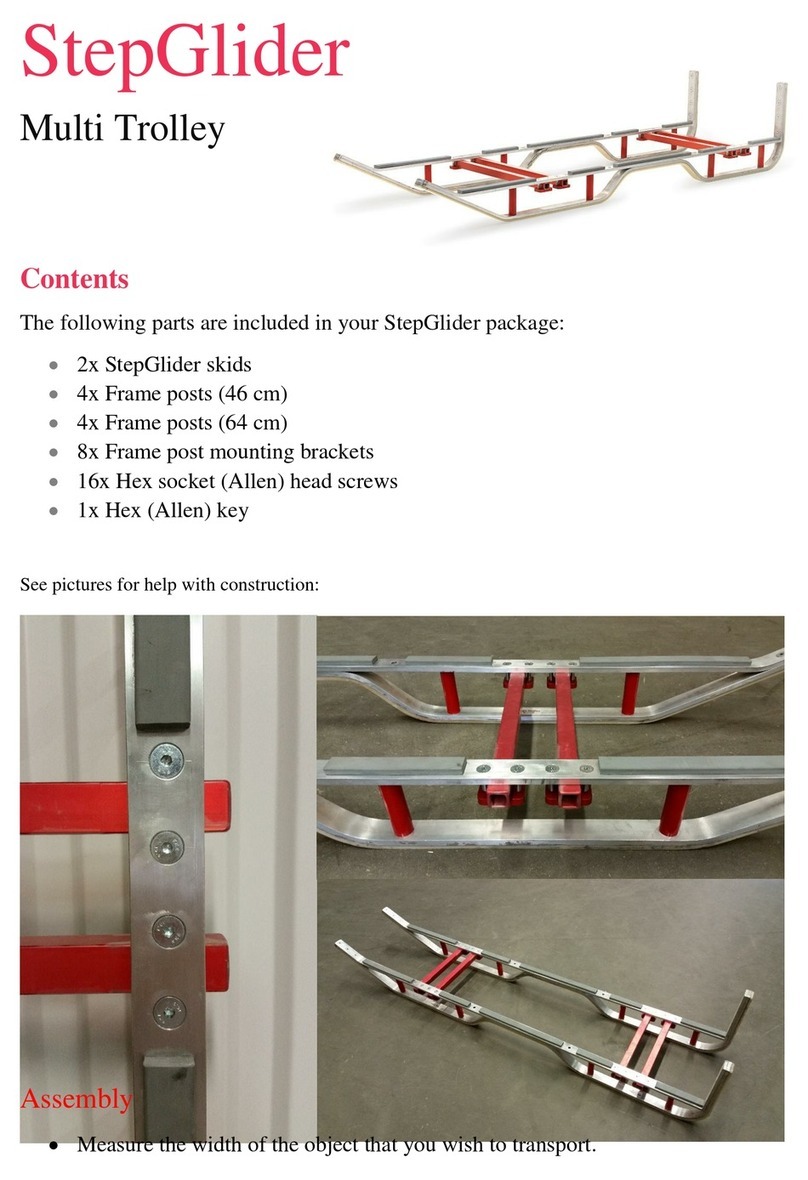
Multi Trolley
Multi Trolley StepGlider quick start guide

Chicago Pneumatic
Chicago Pneumatic CP84010 Operator's manual
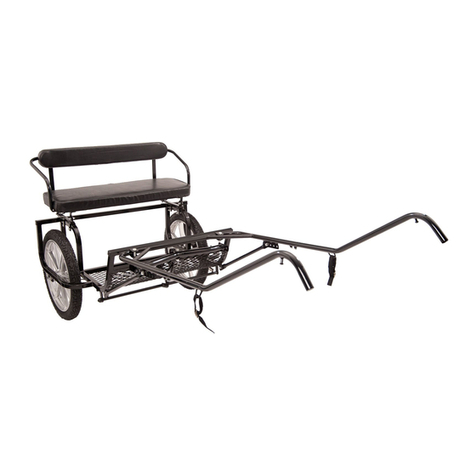
Sulkys
Sulkys Cavalettie user manual
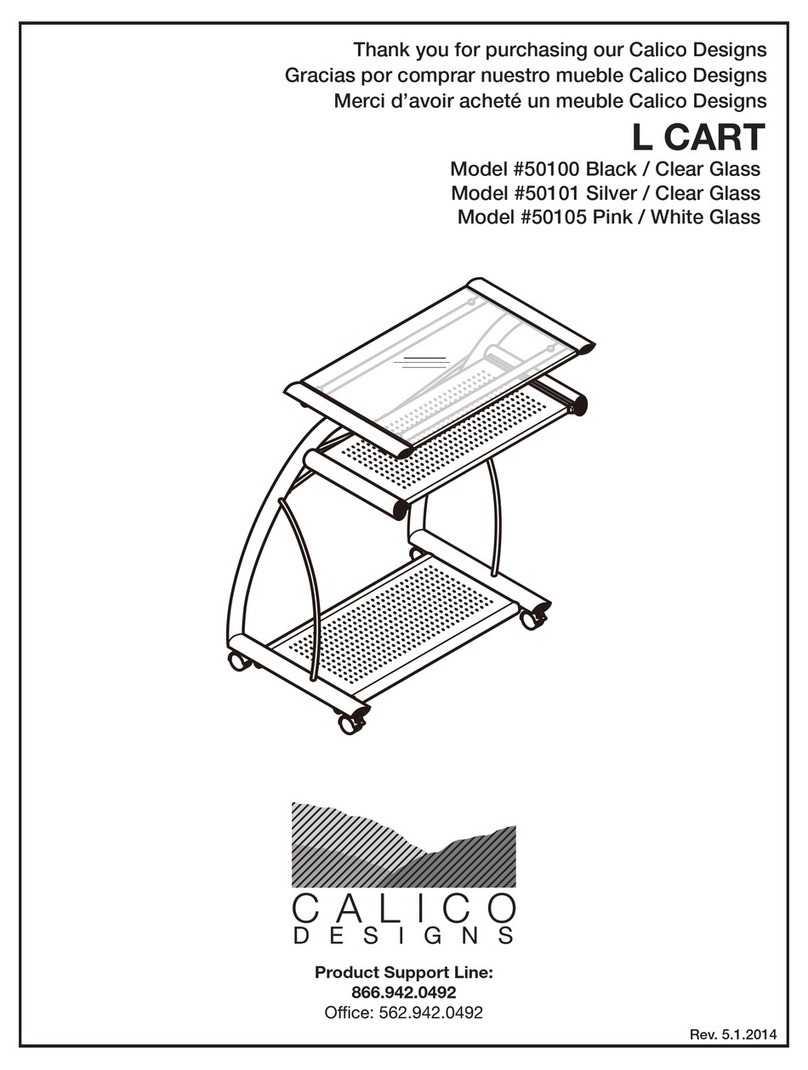
CALICO DESIGNS
CALICO DESIGNS 50100 Assembly instructions

Amity Technology
Amity Technology 5250 Owner's operating manual
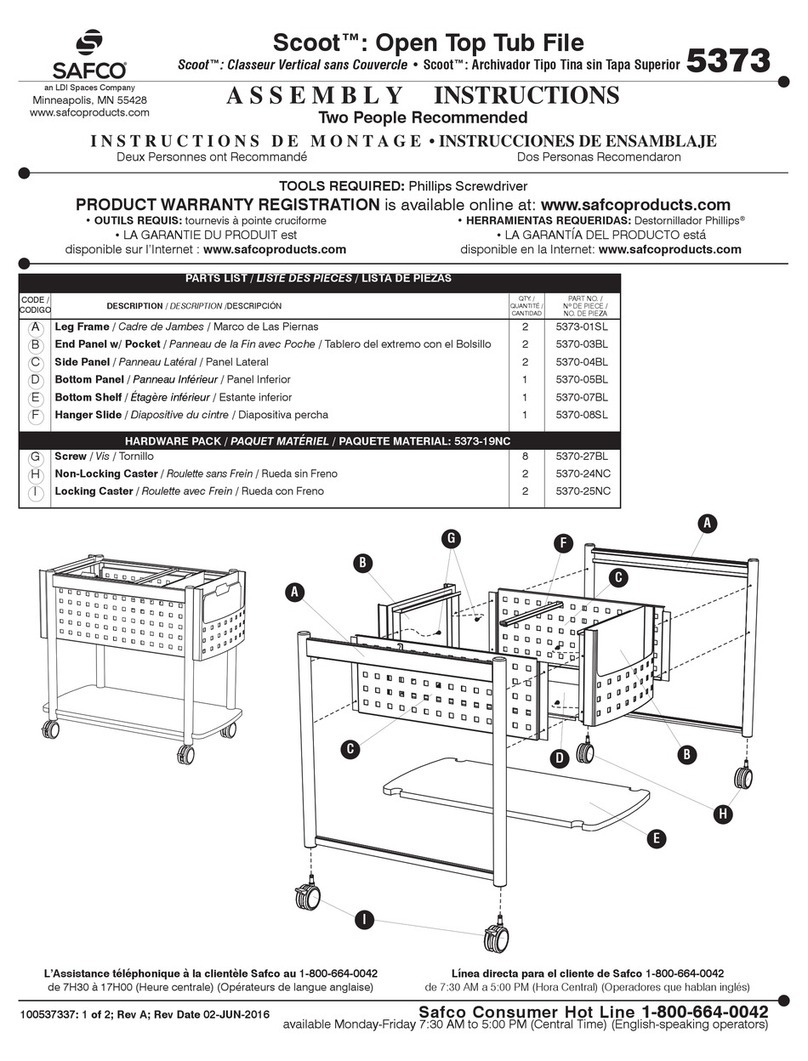
LDI Spaces
LDI Spaces SAFCO Scoot 5373 Assembly instructions


